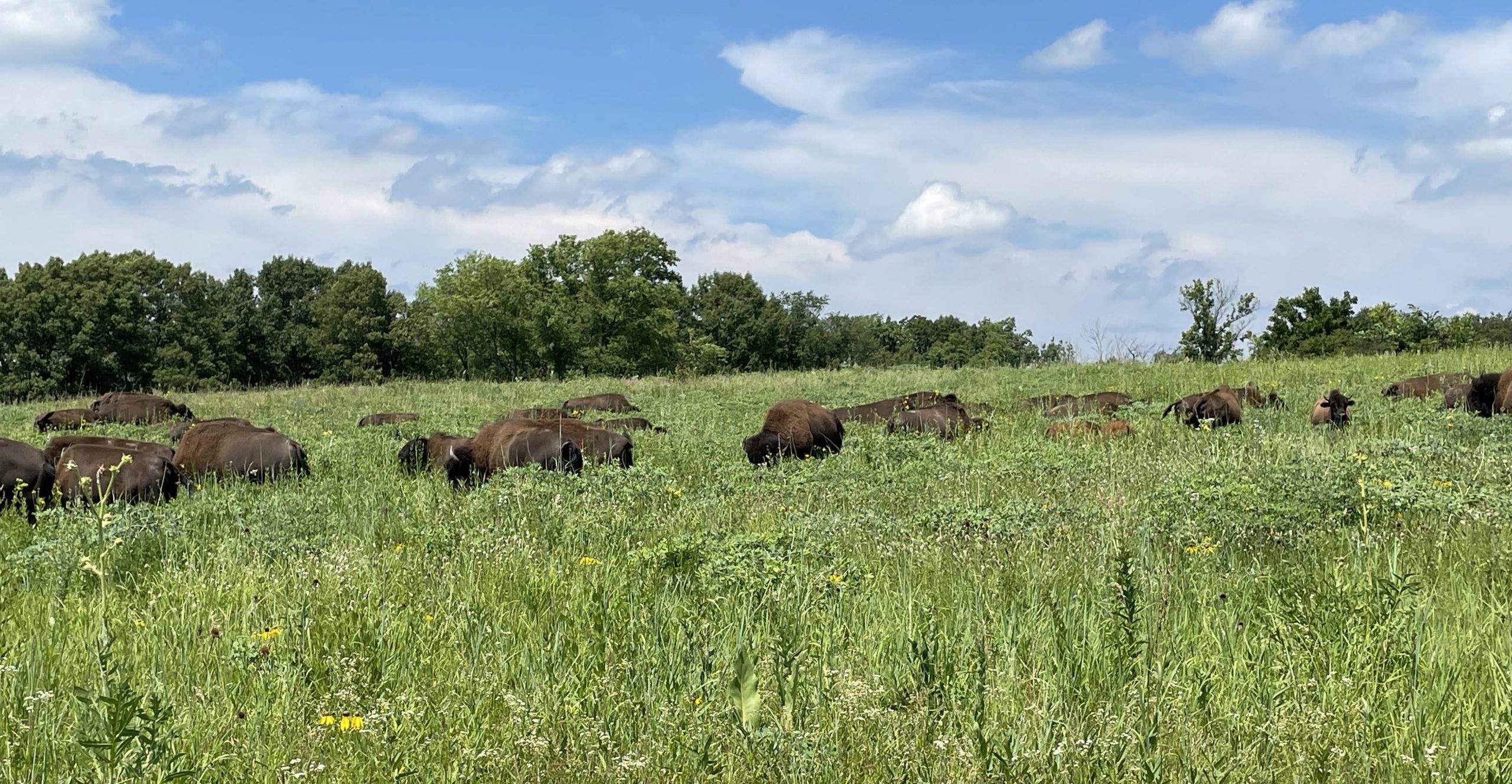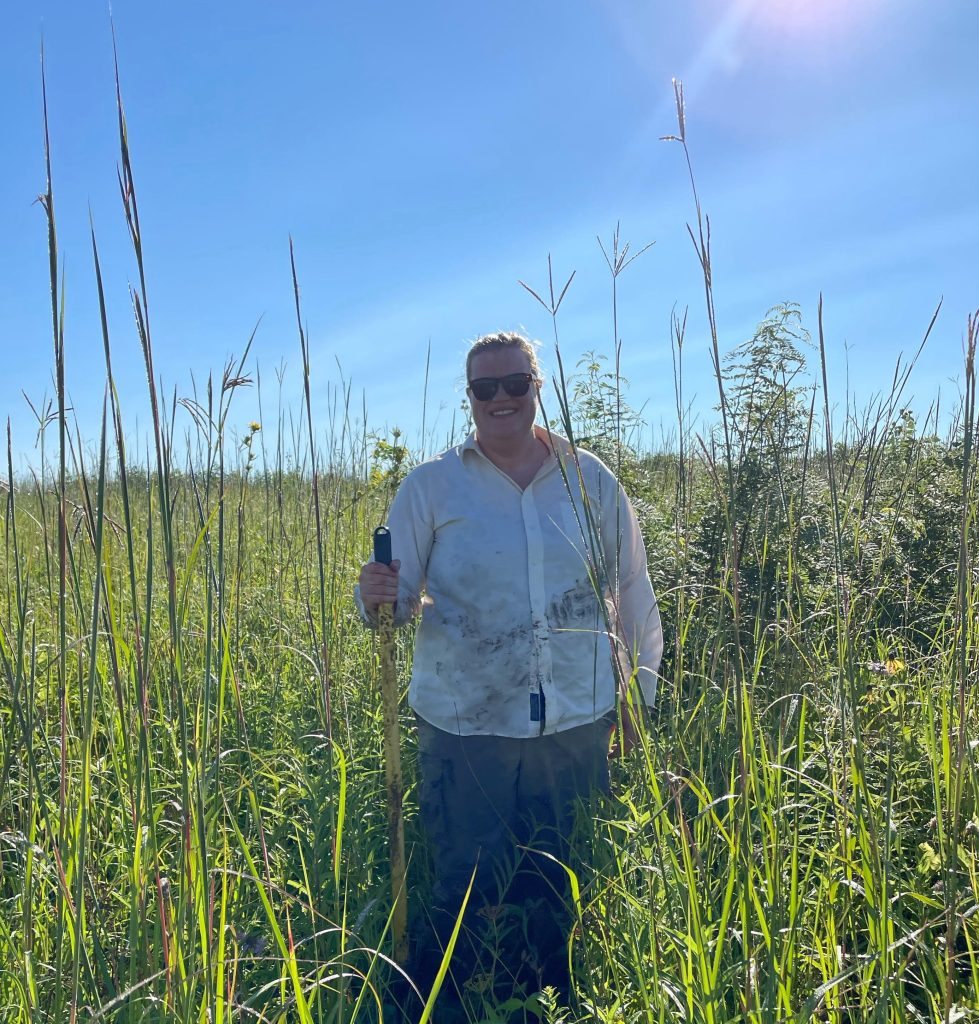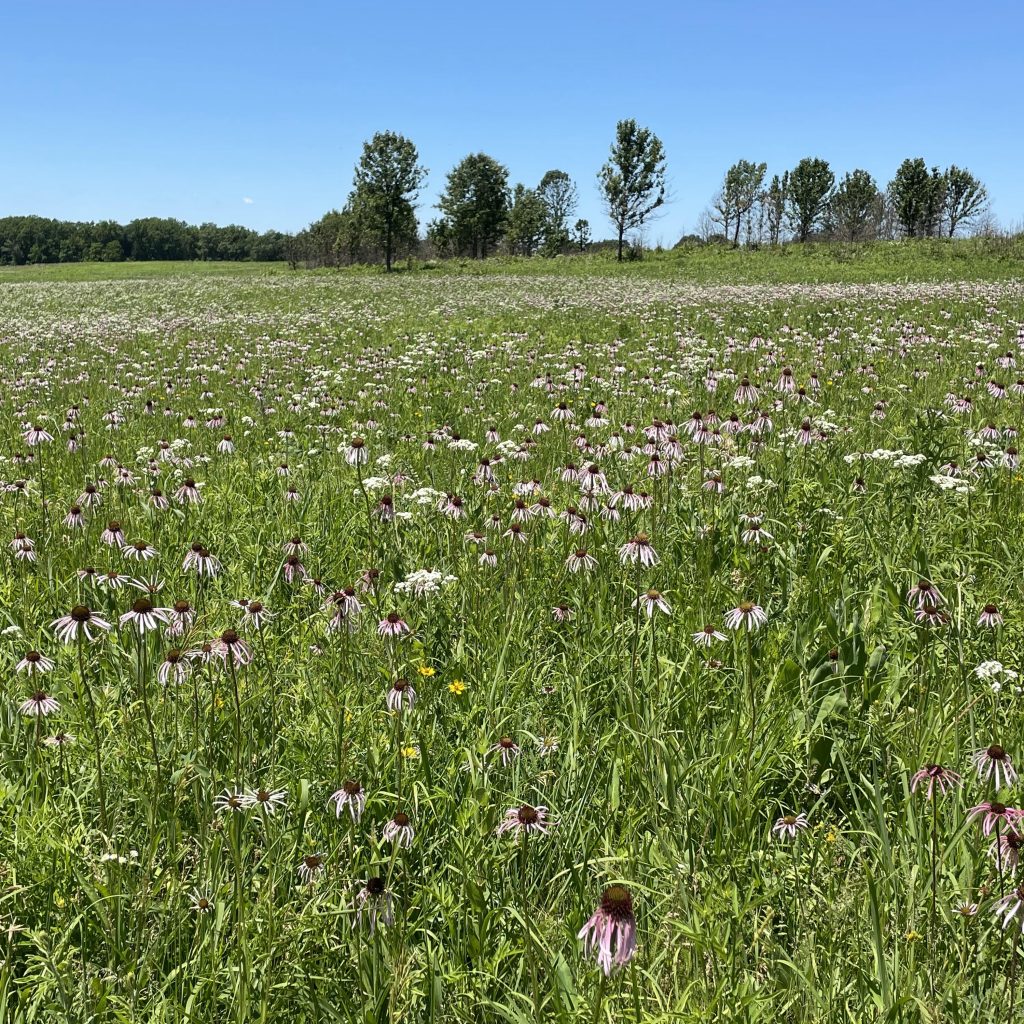
Native prairie ecosystems have been disappearing across North America since the agricultural revolution of the 1800s. The increased need for higher crop yields, infrastructure, and resource extraction were the main instigators of the loss. Although these are important drivers for the United States’ economy, crop efficiency has increased, oil wells are drying up, and infrastructure gets abandoned. This has led to an effort to transition degraded land back to the once-dominant tallgrass prairies. But how do these transitions affect the overall health of the land?
Jennifer Bell, assistant professor of soil science at the University of Wyoming, along with colleagues from the Morton Arboretum and Northern Illinois University, conducted a research project highlighting exactly that. Their recently published paper “Bison and burn timing shape arbuscular mycorrhizal diversity and community composition in tallgrass prairie restorations” links the effects of the management practices, grazing and controlled burning, on the health of soil mycorrhizal fungi.
These fungi are the backbone of prairie ecosystems, responsible for the all-important exchange of nutrients in the soil to the root system of almost all functional plant life.
Soil mycorrhizal fungi survive on the sugars provided from plant roots; on the other hand, the plants utilize the fungi for increased access to water and nutrients. “We often think of soil as useless and just dirt. But that is not true at all,” Bell says.
With the fungi structure being a web of long interconnected fibers, the mycorrhizae associated with each plant within the soil are generally longer than the associated plant’s entire root system.
In Nachusa Grasslands of north-central Illinois, Bell studied the health and recovery of mycorrhizal fungi after the restoration to tallgrass prairie from historically row-cropped land. The practices she focused on were controlled burns and grazing, in this case by bison.


Bell found that the abundance, diversity, and community composition of the mycorrhizal fungi were relatively unaffected by fire, but bison impacted community composition and diversity, likely caused by bison-driven changes in the plant community. Recovery of the mycorrhizae happened quickly after burning and restoration, indicating that mycorrhizae can likely recover without added inputs.
While this quick recovery was unexpected, it is actually very important for the land manager. With the new knowledge that the fungi are quite resilient to changes and recover from disturbance quickly, managers now know that mycorrhizae can be restored along with the tallgrass prairie and that they are not causing direct harm to their soil through these specific management practices. Current practices proven to be useful in land restoration projects, like controlled burns, may not need to be adjusted to accommodate conservation of fungi.
Although soil and the life it houses has proven resilient in this study, Bell wants to make sure managers do not forget about the importance of life below ground. During an interview she stated, “Don’t take advantage of your soil.” With the naked eye you cannot see life within the soil, but do not let the invisible be forgotten.
In the future, Bell plans to release more research from Illinois answering the question “How do different plantings with different levels of phylogenetic traits affect the soil microbial communities and soil nutrient cycling?”
In Wyoming she wants to potentially look into the effects of bison on soil health in more locations, due to bison abundance and establishment in Yellowstone and potential introduction on the Wind River Indian Reservation. Bell has a deep love and interest for soil, which makes it exciting to see where she takes her research next!
Bell and her collaborators published their findings in the scientific journal Applied Soil Ecology in February 2025.




